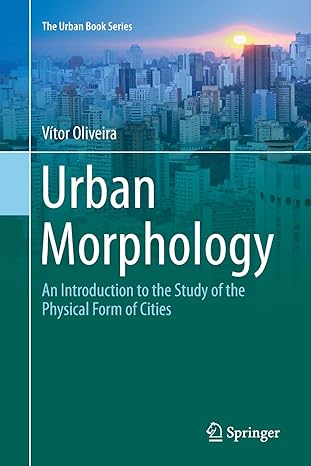Exercise 2.3A Collection of Urban Tissues The exercise A Collection of Urban Tissues explores the idea that,
Question:
Exercise 2.3—A Collection of Urban Tissues The exercise ‘A Collection of Urban Tissues’ explores the idea that, despite the differences, all urban landscapes are structured by the same elements of urban form.
What changes, from place to place, is the way these elements are combined in each specific setting. For instance, the combination of irregular streets, small street blocks, many plots per street block, small plots of irregular form, coincidence between plot and building frontages, and high building coverage, are characteristics of mediaeval urban landscapes. Yet, the basis for this morphological description of mediaeval landscapes are streets, plots and buildings – the main elements of all urban landscapes.
For this exercise, each student should select one city in his country. Different students should select different cities. Using a software for the interactive visualization of maps and satellite images (like Google Earth, Bing Maps or Baidu Maps),
and focusing on the two-dimensional view of the selected city, the student should try to identify different urban tissues. Each identified tissue should be formed by a particular combination of streets, plots, and buildings. Based on these results, each student should prepare a brief PowerPoint (5–10 min) to be presented in classes.
The PowerPoint should contain three main slides for the whole urban tissues: i. one slide with plans of the tissues, approximately at the same scale (see also Fig. 2.2);
ii. one slide with photographs of the tissues (street-views obtained from the referred software); and, finally, iii. one slide gathering the major characteristics of each tissue, in terms of streets, plots and buildings.
Step by Step Answer:

Urban Morphology An Introduction To The Study Of The Physical Form Of Cities
ISBN: 287081
2nd Edition
Authors: Vitor Oliveira





